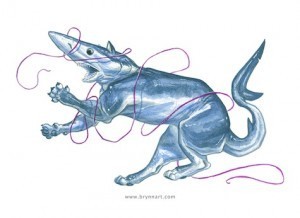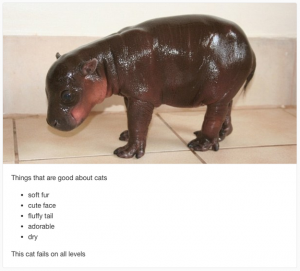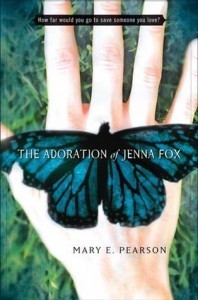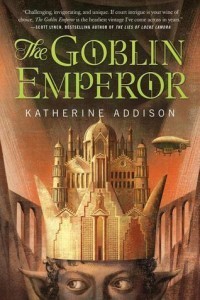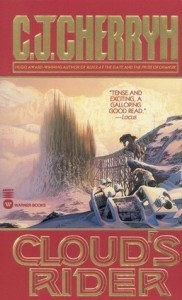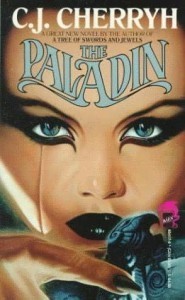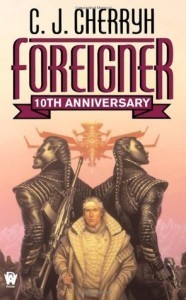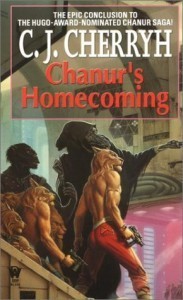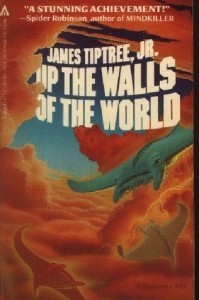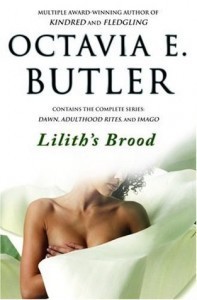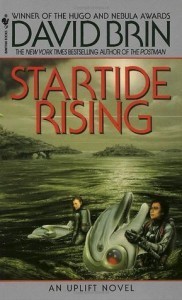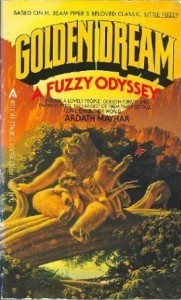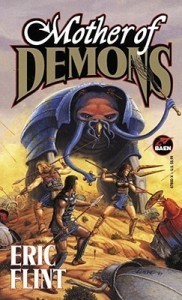Rachel Neumeier's Blog, page 356
November 25, 2014
Cats . . . sort of
People do sometimes come up with curious hobbies. And luckily (?) thanks to the internet, we are likely to find out about them.
I mean, we all know that the internet is full of cat pictures and kitten videos. Why, I myself have been known to indulge in the occasional kitten video.
But check this out from tor.com:
This is a shark cat! Brynn Metheney, who creates critters for D&D and other games, came up with this concept and has done a whole selection of shark cats. Including a calendar, available (along with lots of other things) from her store. In case you think you might like a shark cat calendar for your office, say. I suspect it would be quite a conversation piece.
On the same theme, sort of, have you ever checked out The Worst Cat tumblr? Here is an example:
Welcome to the Worst Cats. Some people like all breeds of cat. But I think some breeds are just gross.
THINGS PEOPLE ARE SAYING ABOUT The Worst Cats:
“Oh man I don’t like looking at deformed animals” – coworker
“I don[‘t think that’s a cat, Sara. How did you find out about this cat” – cat expert
“It looks like a combination between a cat, a dog and a pig. Is that what they look like when they’re newborn?” – friend
“That’s disgusting. Are you trolling me?” – computer expert
“That is a hippo” – someone who knows nothing about cats
This is oddly funny. I bet it won’t surprise you to know that someone then started a tumbr called “The Worst Hippo.” With, of course, pictures of cats. Some of the cats are pretty peculiar, even for cats.
Okay, I can’t leave you with a hippo, or even a shark cat. Let’s have a proper kitten:
November 24, 2014
“May” vs “Might”
You know the kind of thing where you know what’s grammatically right but you don’t know the rule? And people do it wrong and you flinch but you can’t explain WHY they’re wrong, you just know they are? For me that feeds into occasionally telling a student, “I can’t explain it, but I’m right, do it my way.” But then you’re all like, WHAT IS THE DAMN RULE ANYWAY?
Well, I finally looked up the difference between “may” and “might”, and, let me tell you, there are a lot of different opinions about this, way more than about any other grammatical thing I’ve ever looked up. I mean, the difference between “who” and “whom” is simple — subject vs object — and even the difference between “which” and “that” is relatively simple — nonrestrictive vs restrictive clauses — and at least everybody agrees. But people are all over the place when it comes to “may” vs “might.”
Some grammar websites insist the two words are nearly interchangeable except that “might” suggests a somewhat lower probability than “may,” but that can’t be right because way too often when I’m reading, I stumble over “may” when I know, I KNOW, that it should be “might.” It wouldn’t feel so wrong if the only difference was a perception of lower probability.
Other websites say that “might” is the past tense of “may”, so that you say “He might have been eaten by the dragon” rather than “He may have been eaten by the dragon,” but that can’t be right either, because I can easily put either of those sentences in a context where it would sound right, like so:
“Gavin hasn’t come in this morning; I’m afraid he might have been eaten by a dragon.”
“Well, yeah, Gavin may have been eaten by a dragon, but you know that won’t stop him — he’ll come back as a ghost in a day or two, so we have to be prepared to face him again!”
Do those sentences sound right to you? I actually think that I could read both of them with either the “may” or “might” and all the versions sound okay to me — definitely not wrong enough to make me stumble if I were reading a story got one of these stentences.
Finally I visited my favorite grammar website, which neatly encapsulated another difference:
Avoid confusing the sense of possibility in may with the implication of might that a hypothetical situation has not in fact occurred.
And I think this is the one that writers often get wrong. In the first dragon sentence above, Gavin might have or may have been eaten by the dragon. Either would work because you are expressing a possibility, and I suppose “might” could express your opinion that the possibility is not very likely, but I don’t think even very sensitive readers would stumble over either version.
But try this sentence:
“Gavin might have been eaten by the dragon, but it turns out he dodged past and successfully made it into the wizard’s castle.”
In this case, you couldn’t use “may” because you are talking about a hypothetical possibility that didn’t happen. If you used “may,” sensitive writers would stumble.
I *think* this is the most common situation where I feel the wrongness of “may.” I am certain that it’s always “may” that is the problem, never “might.”
So I guess if you try to boil it down, it’s more or less like this:
“Might” sometimes is used to express a low probability — lower than “may” — but this is subtle and doesn’t matter much.
“Might” is usually the past tense of “may” and in general you want “might have,” not “may have.”
“Might” is used to indicate that something that might have happened, didn’t.
Or something like that.
November 23, 2014
Recent Reading: The Adoration of Jenna Fox
So I’ve been reading only SF lately because of SF Month, except unfortunately I haven’t liked a couple of the books I’ve read recently enough to review them. I’ll just tell you: it was FOR DARKNESS SHOWS THE STARS by Diana Peterfreund and SHIP BREAKER by Paolo Bacigalupi. I did like them both, actually, but not enough to write a review. The former suffered because I knew it was supposed to be an SF retelling of PERSUASION and it did stick quite closely to the original plot and even the names from PERSUASION. Wow, do you ever set yourself up for a negative comparison when you try to follow Jane Austen. Peterfreund’s writing kept annoying me because it wasn’t Austen, and more than that, when you strip out the writing, the actual plot of PERSUASION is an angsty romance and I simply spent the whole time rolling my eyes.
Who would be able to do an Austen retelling? My vote is for Naomi Novik. I thought she captured the style pretty well in Temeraire, though then she went on to tell an adventure story rather than a comedy of manners. But I think the writing style is just crucial if you want to do an Austen retelling.
Then I did like SHIP BREAKER, only . . . not that much. I liked it a lot at the beginning and then started to have issues with it as it went on. (Nailer’s druggy father really kept focused enough to track him down on a cross-country flight? Really?) And partly because of the use of Nailer’s evil father as The Bad Guy, the plot seems very predictable. We just know the father is going to be right there over and over, reappearing magically at the right time to be scary, and that the final battle will be between Nailer and his father. Poof, there that final battle is, zero surprise. And besides that, well, I don’t know. To me, the characters seemed to kind of flatten out as we went on. And the ecological message is heavy-handed — at least once Bacigalupi speaks to the reader directly because there is simply no way Nailer would think about Orleans in the terms he does. He doesn’t even have the vocabulary, except now and then when Bacigalupi forgets his character’s limitations because it’s so important to deliver the Message.
Well, that sounds too negative. Actually, I did like the story fairly well. I see the sequel starts off with Tool, the half-man, as the protagonist. I thought Tool was by far the most interesting character, so I may go on and pick up the sequel.
But then I really wanted to read a top notch SF story if I could, so that I could review it for SF Month. So I went back and re-read THE ADORATION OF JENNA FOX by Mary Pearson because I loved it when I first read it and because I’ve had the sequel on my TBR shelves for a while.
I used to be someone.
Someone named Jenna Fox.
That’s what they tell me. But I am more than a name. More than they tell me. More than the facts and statistics they fill me with. More than the video clips they make me watch.
More. But I’m not sure what.
“Jenna, come sit over here. You don’t want to miss this.” The woman I am supposed to call Mother pats the cushion next to her. “Come,” she says again.
I do.
“This is an historic moment,” she says. She puts her arm around me and squeezes. I lift the corner of my mouth. Then the other: a smile. Because I know I am supposed to. It is what she wants.
“It’s a first,” se says. “We’ve never had a woman president of Nigerian descent before.”
“A first,” I say. I watch the monitor. I watch Mother’s face. I’ve only just learned how to smile. I don’t know how to match her other expressions. I should.
“Mom, come sit with us,” she calls out toward the kitchen. “It’s about to start.”
I know she won’t come. She doesn’t like me. I don’t know how I know. Her face is as plain and expressionless to me as everyone else’s. It is not her face. It is something else.
“I’m doing a few dishes. I’ll watch from the monitor in here,” she calls back.
I stand. “I can leave, Lily,” I offer.
She comes and stands in the arched doorway. She looks at Mother. They exchange an expression I try to understand. Mother’s face drops into hre hands. “She’s your nana, Jenna. You’ve always called her Nana.”
“That’s all right. She can call me Lily,” she says, and sits down on the other side of Mother.
This is the first chapter of THE ADORATION OF JENNA FOX, which I first read when it came out, in 2008. I really enjoyed it and thought it was very well put together, and I still think so after just re-reading it a few days ago.
It’s beautifully written, with a spare, straightforward style that unobtrusively creates Jenna’s voice and draws the world around her. The mysterious world, because Jenna has just woken up from an eighteen-month coma and finds everything about her life baffling. Her memories are not just spotty, but highly peculiar She remembers how to speak, but not exactly what words mean, so she has to look them up:
Curious adj. 1. Eager to learn or to know, inquisitive. 2. Prying or meddlesome. 3. Inexplicable, highly unusual, odd, strange.
She knows her mother is her mother – or at least she has been told so – and as she watches videos her parents took of her as she grew up, she can see how much she was loved. And she can see how hard she tried to deserve that love. But she doesn’t remember any of that. And beyond the wasteland of her personal memory, everything just seems . . . odd.
There is something curious about where we live. Something curious about Lily. Something curious about Father and his nightly phone calls with Mother. And certainly something curious about me. Why can I remember the details of the French Revolution but I can’t remember if I ever had a best friend?
This is at its heart a story about family and love and the importance of self-determination, and most of all about what it means to be human. The first time I read it, I was afraid the ultimate message was going to be anti-science, but I’ll give this much away: in the end that is not the case. Not only that, but this is one of the tiny handful of SFF titles that both makes modern Christianity a visible part of life and gives religion a positive spin: though the story could have presented an underlying faith vs science opposition, it didn’t do that, either. This one is a winner in every sense: unusual, beautifully told, with a plot that you sort of see coming, but not exactly.
The sequels:
I just finished the second book, and here’s my take on that: THE FOX INHERITANCE is not a bad book, and a lot about it is good, but it is not in any way necessary. The first book in many ways is superior taken as a stand alone; I think it loses a little bit when you read the sequel. But only a little bit; if you really love the first book and want to go on with the sequel, that’s fine!
Where ADORATION is a slow, introspective story, THE FOX INHERITANCE is much more action-packed, though it deals with some of the same themes as the first book, especially the what-it-means-to-be-human thing. It is much more futuristic, set a little more than 250 years in the future, and I do like how Pearson handles that, with all kinds of surprising things that you can see possibly existing but almost no explanations. I can see this turning off some readers, but I liked how someone would casually mention the partitioning of America and then the story would just go on.
However, I found many important aspects of the plot highly predictable and reading about Kara highly unpleasant. I did go on to order the third book, which is clearly a direct sequel of the second, so obviously I found it good enough for that. Especially since the problem with Kara has now been solved. But my personal recommendation is: the first book is definitely a thumb’s up, but there’s perhaps no need to rush into the sequels — and you may not feel much impulse to go on because the ending of the first book is beautiful.
November 22, 2014
Wow, here’s an unexpected chance to stock up on classic titles
Download 600 free eBooks to your Kindle, iPad/iPhone, computer, smart phone or ereader. Collection includes great works of fiction, non-fiction and poetry, including works by Asimov, Jane Austen, Philip K. Dick, F. Scott Fitzgerald, Neil Gaiman, Tolstoy, Dostoevsky, Shakespeare, Ernest Hemingway, Virginia Woolf & James Joyce. Also please see our collection of Free Audio Books, where you can download more great books to your computer or mp3 player.
How about that? I’m going to pick up some for sure. And maybe even read some of them. Eventually. *So many books, so little time!*
November 21, 2014
Standalone titles: Fantasy and SF
Over at tor.com, we have a list of seventeen standalone fantasy titles. Now, mind you, a standalone is a mixed blessing. Because one of those titles is THE GOBLIN EMPEROR and how many of us are weeping because there isn’t a sequel planned? Right?
Even so, I must admit I’m often more likely to pick up a book, especially by a new-to-me author, if it stands alone.
other books I’ve read and loved from tor.com’s list: lots, actually, but particularly:
Tigana by Guy Gavriel Kay
The Wheel of the Infinite by Martha Wells
The Last Unicorn by Peter Beagle
Wait, wait, but they include Those Who Hunt the Night by Barbara Hambly, which kind of changes the topic from “books that are completely standalone” to “books that stand alone well enough that you don’t have to actually buy the sequels”, which is an entirely different kind of list and much much broader. Phooey, I say. A list for standalone titles should include ONLY titles that stand ENTIRELY alone in their universe.
Also! Why are only fantasy novels listed here? Quick, let’s list some great standalone SF novels, because I’m sure there must be lots. I don’t know that I can get to seventeen strictly from memory, but I’ll try for ten. So in no order, as they occur to me:
1. The Speed of Dark by Elizabeth Moon
2. And All the Stars by Andrea K Höst
3. The Darkling Sea by James L. Cambias
4. Embassytown by China Miéville
5. Cuckoo’s Egg by CJ Cherryh
6. Have Spacesuit Will Travel by Heinlein
7. The Diamond Age by Neal Stephenson
8. The Witches of Karres by James H. Schmitz
9. Hellspark by Janet Kagan
10. The Martian by Andy Weir.
There! That wasn’t so hard. That’s certainly a wide range, too: everything from quite hard SF to basically science fantasy. I bet you can all think of others.
Not to mention lots of other fantasy titles that aren’t on tor.com’s list. Like just for example *most* of Patricia McKillip’s books, not to mention The City in the Lake, which is not only a standalone right this minute, but always will be, because unlike some of my other titles, I have no plans to write a sequel.
November 20, 2014
Comments are functioning!
I hope there will be no further problems with comments, but certainly at the moment the comment function is working fine! So please share your own favorite pumpkin recipe, or add a comment about your favorite CJC novels, or mention your personal favorite alien species in SF — whatever you like.
Just a week to Thanksgiving, and I don’t like pumpkin pie
I like turkey and stuffing and green bean casserole and okay not Brussels sprouts, but everything else on the table is likely to be tasty. I need to mention to my mother that I want to make the stuffing this year because I have some snazzy recipes pulled out and really want to try the one with chestnuts and sausage.
But though I appreciate tradition as much as the next person, pumpkin pie isn’t really my thing. If you, too, would like to work pumpkin into the menu without actually making a pumpkin pie as such, here are some recipes that will let you do that. All of them are tasty, though as you will see some are not meant to be replacement desserts at all — just to use pumpkin so that you can feel that you are properly following the (culinary) spirit of the holiday.
1. Way better than pie: Pumpkin Swirl Cheesecake
1 1/2 C vanilla wafer crumbs or gingersnap crumbs
1/2 C finely chopped pecans
1/3 C melted butter
2 8-oz pkg cream cheese, softened
3/4 C sugar
1 tsp vanilla
3 eggs
1 C canned pumpkin
3/4 tsp cinnamon
1/4 tsp nutmeg
Combine crumbs, pecans, and butter. Press onto bottom and 1 1/2 inch up the sides of a nine-inch springform pan. Bake at 350 degrees for ten minutes.
Combine cream cheese, 1/2 C sugar, and vanilla until well blended. Beat in eggs one at a time. Set aside one cup batter. Add remaining sugar, pumpkin, and spices to the rest of the batter and mix well. Spoon pumpkin and plain batters alternately over the crust and cut through with a knife to swirl. Bake at 350 degrees for 55 minutes. If you have problems with cheesecakes cracking, then you might try reducing the heat to 300 degrees after forty minutes and baking longer. The cheesecake is done when the center looks almost set and jiggles only very slightly when you gently shake the pan. If there are tiny cracks around the edges, the cheesecake is almost certainly done (and probably slightly overbaked, but it will be fine).
Run a knife around the edge of the springform pan but don’t remove the edge. Cool completely. Chill overnight. Remove the rim and serve.
2. A casual lunchtime dessert for the Thanksgiving holiday: Pumpkin-Chocolate Chip Cookies
1 C butter, softened
1 C sugar
1 C brown sugar
1 egg
1 tsp vanilla
2 C all-purpose flour
1 C quick oats
1 tsp baking soda
1 tsp cinnamon
1/2 tsp salt
1 C canned pumpkin
8 oz bittersweet or semisweet chocolate chips
Cream butter and sugars. Beat in egg and vanilla. Combine dry ingredients and add in three portions, alternating with half the pumpkin between portions. Stir in chocolate chips. Drop onto cookie sheets and bake at 350 degrees for 9-12 minutes. These are really good, so if you wouldn’t ordinarily combine pumpkin with chocolate, try them and see for yourself that it works.
3. For breakfast during the holidays: Pumpkin-Pecan Biscuits with Honey
I’m not a huge fan of pumpkins, pecans, or honey — but I love these biscuits. Give them a try. I’d personally suggest serving them with ham, btw.
2 C flour
1/4 C sugar
4 tsp baking powder
1/2 tsp salt
1/2 tsp cinnamon
1/2 tsp nutmeg
1/4 C butte
1/3 C chopped pecans, toasted. It’s easiest to toast pecans before chopping: put them on a baking pan in a 350 degree oven, shake the pan after four minutes and then again after 3 more minutes and then again after 2 minutes, until the pecans smell toasted and look a shade or two darker.
2/3 C canned pumpkin
1/3 C light cream (half and half)
Combine dry ingredients. Cut in butter with a handy pastry cutter, or two knives, or pulse the dry ingredients in a food processor, and the butter, and pulse to cut in. A heavy pastry cutter with good sturdy blades (not wires) is easy to use and a nice item to have around, though. Anyway, stir in the pecans. Combine the pumpkin and light cream and stir in. The dough should be stiff. Turn it out on a floured surface, knead a couple of times, pat out 1/2 inch thick, and cut out with a 2-inch cutter or whatever you have handy. Place on parchment-lined baking sheets. Gently knead the scraps together, pat out again, and cut out more biscuits. Bake at 400 degrees for 12-15 minutes. Serve with butter and honey (even if you’re not crazy about honey, try one with just a tiny bit of honey and see what you think).
4. Avoiding desserts? Or just really dislike pumpkin? For lunch the day after Thanksgiving, try Pork-Pumpkin Chili
1 lb pork tenderloin (or pork shoulder, or beef chuck, or, I guess, chicken), cubed
2 Tbsp oil
1 onion, chopped
2 cloves garlic, minced
1-4 poblanos, chopped
1-2 jalapenos, chopped
2 tsp cocoa powder
1 tsp ground cumin
1/8 tsp cinnamon
1 1/2 C chicken broth, or beef broth, or hey, turkey broth. Whatever.
15-oz can pumpkin
1/4 C heavy cream
Brown pork in oil. Add onion, garlic, poblanos, and jalapenos and cook, stirring, five minutes. Add cocoa powder, cumin, cinnamon, maybe a tsp of salt, and stir a couple of times. Add the broth and bring to a boil. Reduce heat, cover, and simmer 30 minutes (for pork tenderloin; an hour for pork shoulder, 2 1/2 hours for beef chuck, or 20 minutes or so for chicken. I used beef because that’s what I had. I simmered it at a low heat for an hour, reduced the heat to very very low and left it for an hour and a half while I went out. The lowest heat on my induction stovetop is barely warm enough to melt chocolate, so this was like a slow cooker temperature.)
After the meat is tender, add the pumpkin and cream (I used a generous quarter cup of coconut milk since I didn’t have cream around). Heat through. Taste and add more salt if necessary.
With a longer cooking time, the onions and chilies will just about melt into nothing. This is perfectly okay. With a shorter cooking time, the onions and so on will have more of a noticeable presence, which is also fine. I’m trying out different chili recipes for an upcoming chili cookoff and this one was both unusual and good. The pumpkin is not an identifiable presence, but it adds body and smoothness and cuts the heat. If you try this and it turns out to be too spicy for you despite the pumpkin and cream, try serving it with elbow macaroni or for that matter with rice, like a curry, which is what I’m going to try tonight.
There you go! Enjoy your Thanksgiving, all you Americans out there! I have a lot to be thankful for this year; I hope you all do too.
November 19, 2014
Another look at CJ Cherryh –
Okay, so I’m still having trouble with comments, so if you have a comment, please email me at rneumeie@gmail.com and I’ll post it myself, okay? The problem is being worked on, so hopefully it’ll be fixed soon.
Meanwhile!
Mary Beth emailed me a comment about Cherryh’s “horses” in the CLOUD’S RIDER duology as aliens (though not quite sentient, maybe).
Though I did like the horses in those books (“I want bacon!”), this duology wasn’t my favorite of Cherryh’s work, and I said so, and we had a conversation about dangerous carnivorous horses compared to My Pretty Pony Pal horses in fantasy, and about Cherryh in general, and I realized that really there have been quite a few Cherryh books that were not my favorites. So, here’s my top five picks for Cherryh, not necessarily the ones I’d recommend to just anybody new to her work, but my personal favorites. And my personal bottom five, just for balance.
CJ Cherryh’s Greatest Hits:
1. The Chanur series. Love it. Aliens and action and spaceships and complicated politics, and actually I think you can see Cherryh’s growth as a writer when you compare the first three with the fourth that was written later (Chanur’s Legacy).
2. Cuckoo’s Egg. The reason I didn’t put this in my “Great aliens” post is because the point of the story is not to make the aliens alien, exactly. Culturally they are distinctive, but psychologically they are imo quite human, and deliberately so. But it’s a great book, a standalone, short, with an intimate feel, truly one of my all-time favorite stories.
3. The Foreigner series. Okay, I love it, but I wouldn’t really suggest someone new to Cherryh start with a fifteen book series. Hah hah hah. No. But it is one of my favorites. Here’s Ann Leckie’s comments about the first book, which clearly explains both why I love this series and why I wouldn’t expect it to work for just everybody.
4. Paladin. This is one of Cherryh’s fantasies, one set in an alternate China.
This is a wonderful story, very closely focused on just one POV character. My guess is it would probably seem too slow to some readers, but I love the day-to-day feel of the story. Actually, in some ways it reminds me of A Stranger to Command by Sherwood Smith — both emphasize day-to-day detail of military training. Anyway, Goodreads says: “Now betrayed by the Emperor he once protected, master swordsman Saukendar leaves the way of the sword behind him forever–so he thinks. When a headstrong peasant girl burning to avenge her murdered family demands that he train her, Saukendar is faced with a momentous choice. Send Taizu away, never see her again–or join her and destroy the tyrant who has nearly destroyed them both.” This is basically true, although the story opens years after Saukendar retires from the world.
5. Cyteen. I’ve re-read this one a bunch of times, though I must admit I skip ahead till young Ari appears. I loved the sequel, too, though for me Regenesis was all about watching Justin and Grant and Ari and everyone get their lives in order and only a tiny bit about actually finding out who initially killed the older Ariane Emory.
The bottom of Cherryh’s barrel:
5. Forty Thousand in Gehenna. Watching the slow-motion destruction of the society established on Gehenna is just rather painful, especially since we see a good many people live not very pleasant lives during that part, so the whole first two-thirds of the book are not a very enjoyable read, at least not for me. I liked it better once we skip forward to the new, altered society that eventually grows out of colony.
4. Wave Without a Shore. Too weird for me, or something. It’s been a long time. Maybe I should try it again. But the fact that I’ve never re-visited it says something right there.
3. Brothers of Earth. There’s putting your protagonist through hell, and then there’s putting your protagonist through hell. I can see some of the ideas from this book echoing forward into later work, the whole throw-one-human-into-an-alien-society thing that Cherryh returns to again and again, but imo the Faded Sun trilogy was so much better.
2. Faery in Shadow. Caithe mac Sliabhan is under a curse that can’t be broken, only sort of slanted to be a little less cruel. The whole thing is just too grim for me.
1. The Rusalka series. I read the first book, didn’t like it, bought the second book, never actually picked it up off the shelf, and eventually gave them away. This was Cherryh’s only Total Failure for me, since I did keep all the rest of her books, even those I haven’t re-read. Now I’m sort of inclined to go back to Wave Without A Shore. Maybe I’d like it better now.
How about you all? If you’re a CJC fan, what are your top and bottom picks? Are they totally different from mine?
Remember, if you can’t comment in the ordinary way, just email me at rneumeie@gmail.com
November 18, 2014
Quick note –
Just wanted to say: I’ve got an issue with comments just now, as you may have noticed if you tried to leave a comment, or read comments. Hopefully this will be fixed very very soon, but it isn’t possible for me to see or respond to comments at the moment. If you like, you can directly email me a comment at:
rneumeie@gmail.com
and I will add it to the bottom of the relevant post. It’s a pain, I know! I’m sure WordPress is working to fix things.
The Top Ten Alien Species in Science Fiction
Okay, first? Let me just say that I hate the term “alien race.” I know it is tremendously nitpicky, but “race” means in biology “subspecies with really unimportant differences,” or more often in modern cultural usage “social distinction with no biological importance whatsoever”, and so it is not really appropriate to use when you really mean “species.” You wouldn’t say that baboons are a race of gibbons or that elephants are a race of horses or that sea urchins are a race of, I don’t know, birds. That is all perfectly ridiculous. And aliens that evolved on a different planet are a lot less related to us than baboons or mice or even sea urchins. So, species, please, not “race.”
Okay, with that rant out of the way, what are some of the best alien species in SF?
In order to be among the “best”, an alien species has to be not-human psychologically and culturally as well as physically — and it has to be believable, or at least seem believable when you’re reading the story. It helps if it is compatible with what we know about animal behavior, which never arises in a vacuum — instinct as well as physiology arise in response to ecological pressures, after all. And, incidentally, when you hear the word “instinct,” you should think about emotions, because emotions are the experiential face of instinct. Think about it this way: The fear that makes you run away from a charging grizzly bear is how you experience the underlying flight instinct. The intense protective, possessive feeling you get when you look at your baby is how you experience the parental instinct. And so forth.
Nonhuman species ought to have evolved in response to different ecological pressures than humans, and thus possess different underlying instincts and different emotional and psychological lives.
Sometimes an SF writer manages to pull this off.
For well-developed nonhuman species, there’s no question which author leaps first to mind: CJ Cherryh.
1. Obviously Cherryh’s Foreigner series offers her best-developed alien species, the atevi.
The atevi are not all that different from humans physically, hardly more so than the standard bumpy-forehead aliens of Star Trek. But Cherryh handles their psychology and culture beautifully: their culture is actually not too alien, though very distinct from the specific human culture of Mosphiera on the atevi world. But the way numerology informs atevi language and modes of thought is great, and atevi instincts are certainly different enough to be a source of dangerous misunderstandings.
But the atevi are hardly Cherryh’s first successful alien species. Anybody who likes well-drawn aliens and hasn’t read her Chanur series should rush right out.
2. The Hani are based on lions, which gives them instincts and a culture that is complex, believable, and feels grounded in reality (because it is). The mehendo’sat are primates, but not human; the stsho are interesting; the kif are just scary — all the alien species in this series are well-drawn. My review of the whole series is here, so I don’t need to go into details again right this minute.
3. Okay, one more: I can’t move on from Cherryh without mentioning a story you may not have ever heard of: the novella “The Scapegoat”, which I found long ago in a used book store, but which might be findable if you poke around — Hephaestus Books did a collection that included it, according to Goodreads. Anyway, in “The Scapegoat,” Cherryh brings us into the middle of a long-drawn-out war that both sides want to stop, but that they can’t find a way to stop because of their psychological and instinctual differences. It is a beautiful story, but I warn you, it always makes me reach for the kleenix. This, I think, is one of the early works that shows Cherryh working out how to handle aliens with instincts that are different from human instincts, and working with the conflicts that arise from this difference. You can definitely view this novella as a precursor to the Foreigner series.
So that’s three titles. Time to move on from Cherryh and let someone else have the spotlight. So, in no particular order:
4. In Up The Walls of the World by James Tiptree Jr, we get the Tyrenni, a species that sort of resemble giant manta rays, but who ride the winds of a large gas planet’s atmosphere rather than being aquatic.
I read this one a long time ago, and I can’t even tell you. I loved it. It was one of the very first alien species I ever encountered. It took me years to bother reading the bits from the human point of view. Psychologically, the Tyrenni are actually very understandable and easy for the reader to connect with emotionally; culturally, they are quite distinctive from humans because their biology and environment is so different.
5. A far more current example of an alien species that evolved in a tremendously different environment are the Ilmatarans that we meet in A Darkling Sea by James Cambias. “On the planet Ilmatar, under a roof of ice a kilometer thick, a team of deep-sea diving scientists investigates the blind alien race that lives below. The Terran explorers have made an uneasy truce with the Sholen, their first extraterrestrial contact: so long as they don’t disturb the Ilmataran habitat, they’re free to conduct their missions in peace.”
So as you can see, we actually get two alien species in this story: The Ilmatarans which are VERY VERY DIFFERENT and the Sholen, which are obviously inspired by bonobos. Cambias handles both well. My favorite detail, because shows an instinct totally alien to humans, is the way Ilmatarans regard their children. They are plainly an “r” selected species, not a “K” selected species — they plainly spawn huge numbers of offspring, which they are utterly disinterested in unless they happen to want an apprentice, in which case they go out and catch a wild child, tame it, and teach it the skills they want it to know. Yet Cambias makes Broadtale a character the reader can easily emphasize with and cheer on. Here’s Jo Walton’s take on A Darkling Sea.
6. While on the subject of instincts that are quite different from humans, let’s mention the Oankali from Octavia Butler’s outstanding, disturbing Lilith’s Brood series.
“Lilith Iyapo is in the Andes, mourning the death of her family, when war destroys Earth. Centuries later, she is resurrected — by miraculously powerful unearthly beings, the Oankali. Driven by an irresistible need to heal others, the Oankali are rescuing our dying planet by merging genetically with mankind. But Lilith and all humanity must now share the world with uncanny, unimaginably alien creatures: their own children.”
Okay, as you can see, lots of scope for conflict and tension and all that good stuff. What interests me most, though, is something that I’m not sure Butler did consciously: she gave the Oankali instincts which they are utterly unable to override. There aren’t any human instincts that can’t be overridden, perhaps because under most circumstances humans actually experience a certain tug-of-war from competing instincts. Thus soldiers can leap on top of a grenade to protect their buddies despite the survival instinct, and unfortunately some mothers can neglect or abuse their children, and if the culture offers enough pressure you can get the brother-sister marriages we saw in Egypt, and so on.
The Oankali can’t override their own instincts and in my opinion this is the single greatest source of misunderstanding between Oankali and humans. If you read this series, think about that and see if you agree. And you really should read it — it is brilliantly written because, you know, this is Octavia Butler we are talking about.
7) Also brilliantly written: A Fire Upon the Deep by Vernor Vinge
I’m not bothering to show cover, because the cover doesn’t show the Tine species at all — it’s a space cover. Which is fine, because this story is about a lot more than the Tines.
“Thousands of years hence, many races inhabit a universe where a mind’s potential is determined by its location in space, from superintelligent entities in the Transcend, to the limited minds of the Unthinking Depths, where only simple creatures and technology can function. Nobody knows what strange force partitioned space into these “regions of thought,” but when the warring Straumli realm use an ancient Transcendent artifact as a weapon, they unwittingly unleash an awesome power that destroys thousands of worlds and enslaves all natural and artificial intelligence.
Fleeing the threat, a family of scientists, including two children, are taken captive by the Tines, an alien race with a harsh medieval culture, and used as pawns in a ruthless power struggle. A rescue mission, not entirely composed of humans, must rescue the children-and a secret that may save the rest of interstellar civilization.”
So you see. As it happens, when I read this book for the first time, I barely paid any attention to the broader SF plot because I was much, much more interested in the Tines. Though telepathic aliens is a very common trope, the Tines are one of the only alien species with believable telepathy, because Vinge sets up “telepathy” with science rather than magic. How cool is that? The Tines are not that intelligent individually, but they form “group minds” with emergent personalities from groups of four or more individuals. There are so many consequences of this that I can’t even touch on the main points, but here’s one: Tine groups have to stay far enough away from other groups that they don’t blur together. And here’s another: they can change their overall personalities by adding (or subtracting) members of the group.
If you’re interested, here’s a review of this title from Kristen at Fantasy Book Café.
8. I used to say that the Tines were the ONLY believable telepathic group-mind species in SF, but now that’s not true! Because Ann Leckie pulled off the same thing, in a different way, in her outstanding Ancillary Justice. Breq used to be a starship with hundreds or even thousands of bodies spliced in (via Sufficiently Advanced Technology). Now Breq is . . . how to put this . . . a group mind reduced to one? As far as I’m concerned, Breq and the other group minds in this universe count as an alien species.
“On a remote, icy planet, the soldier known as Breq is drawing closer to completing her quest. Once, she was the Justice of Toren – a colossal starship with an artificial intelligence linking thousands of soldiers in the service of the Radch, the empire that conquered the galaxy. Now, an act of treachery has ripped it all away, leaving her with one fragile human body, unanswered questions, and a burning desire for vengeance.”
Ancillary Justice was the easy winner of the Hugo this year. I don’t know that I would hand it to a reader who never reads SF, because it’s a pretty demanding story. But anybody who loves fine SF should definitely read this, in the unlikely case they haven’t already.
9. It’s getting tough to choose! Only two spots left for a top ten! Let’s sort of cheat and pick aliens that aren’t *that* alien, in a sense (though quite alien in another sense): Startide Rising by David Brin.
In this book and the others in the series, Brin features “uplifted” dolphins, chimpanzees, and gorillas — animals bred for intelligence and now more or less integrated into the broader human society. In this universe, species never or almost never achieve sentience without being uplifted by another species — but no one knows how humans became sentience. However, that’s not the interesting part. In this context, at least, the interesting part is how dolphins and chimps remain true to themselves instead of becoming exactly like humans. Brin does this well, so the series is worth a place on this list.
10. And finally, after a struggle, I’m including Golden Dream by Ardath Mayhar.
H Beam Piper created the species with his Little Fuzzy and related stories, all of which got these beautiful Michael Whelan covers. But the novel I always liked best is this adjunct story by Ardath Mayhar, from the Fuzzy (Gashta) point of view. The events of Little Fuzzy are seen here, but from the other side and with a whole lot more about Gashta culture integrated into the story. I don’t know that the species is as thoroughly developed as some, or at least I don’t think it is as distinctive as some, but it’s still a delight to read.
In fact, it gave me a longstanding desire to kind of pick this idea up from the other direction: write an SF story where humans were long ago marooned on a world where they didn’t quite fit and their stone-age descendants rescued by really big aliens — aliens who think humans are so cute and charming. I actually do have about 80 pages of this written, so someday . . .
And that’s ten! Whew. It’s hard to stop, so:
11) One more, if you don’t mind: Mother of Demons by Eric Flint. Giant sentient mollusks? That’s hard to beat.
“An outcast with a perversion (she liked males); a great battle mother with an impossible task; a paleobiologist with a terrible sense of humor — they were all revolutionaries, but had never expected this. . . ”
Eric Flint does a great job setting up the biology and culture of his alien species. Some of the story is written from the human point of view and some from various alien points of view. I must say, when a human lifeboat carrying half a dozen adults and a hundred or so kids crashes on the planet occupied by two species of sentient mollusks, the dominant one in, if I remember correctly, the bronze age . . . well, it’s a great set up for drama. This is a faster-paced story, easier to get into than, say, A Fire Upon the Deep.
Okay, I am almost stopping there, but let’s have a handful of honorable mentions before we close. These are honorable mentions because I have one or another problem with the alien species or because the alien species is not all that well developed, not because there’s anything wrong with the stories as stories. I really like all of these.
Hellspark by Janet Kagan. The aliens are not that well developed; the thrust of the story is elsewhere; but it’s good.
The Sparrow and Children of God by Maria Doria Russell. I don’t believe in her alien species, which I don’t think could actually evolve. And some of the worst things I’ve ever read about happen in this duology. But still, it deserves a look if you love alien species.
Hero and Border Dispute by Daniel Kerns (Jacqueline Lichtenberg). I don’t believe in this alien species either, because I think a complex social structure is necessary to evolve intelligence . . . but if I were wrong and a solitary species could become truly sentient, well, it might look very much like this. These books are great fun to read and it’s a huge shame they didn’t take off well enough for the series to continue. I wish Lichtenberg would self-publish any sequels she has sitting around.
Ender’s Game by Orson Scott Card. I dislike magic telepathy in science fiction. I especially dislike magic telepathy and hive minds. Ugh. Cherryh did the hive thing better, at least better for me, in Serpent’s Reach, but I already have three of hers listed that I liked better.
Speaker for the Dead by Orson Scott Card. I totally don’t believe in this ridiculous genetic blending animal-plant lifecycle stuff. Evolution can’t produce impossible results. Faced with the biological challenge presented in the evolutionary past, if nothing had already been resistant, everything would simply have become extinct. I dislike magic biology, so this didn’t make the list. The story itself is good, though.
COMMENTS:
Elaine T adds: “In case anyone cares, it ["The Scapegoat"] is most easily available these days in THE COLLECTED SHORT FICTION OF CJ CHERRYH, which all CJC fans probably ought to have anyway. I read it first in ALIEN STARS ed by Mitchell & published by Baen, and which is probably easy to find used.” Thanks, Elaine! I didn’t know that, and I definitely, but definitely, recommend that everyone look up “The Scapegoat”, which truly is a beautiful story. I also have it in ALIEN STARS, but when I was writing the post, I was doing it from memory and didn’t remember the title of that collection.

